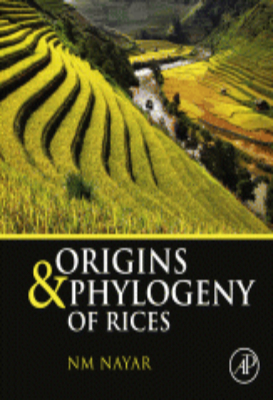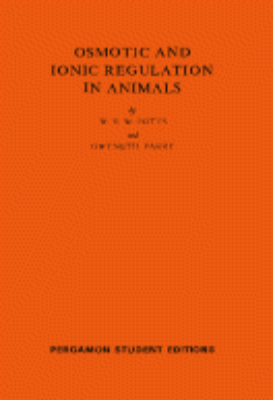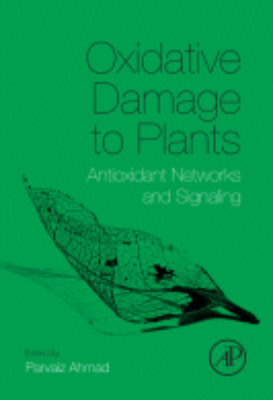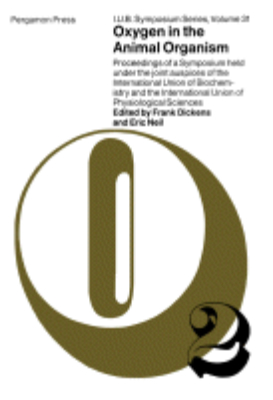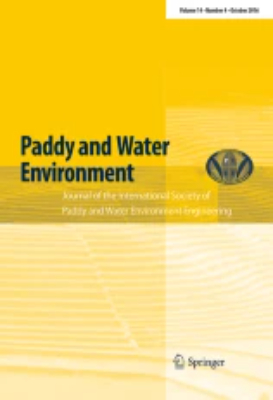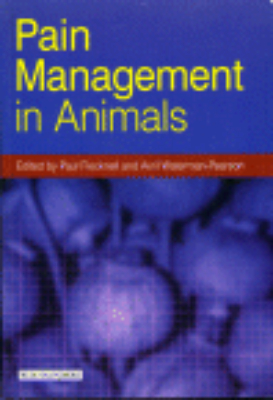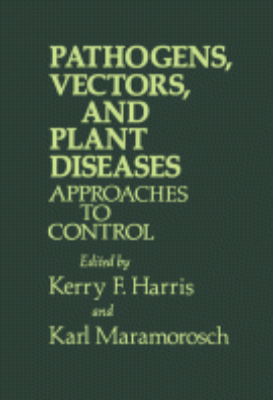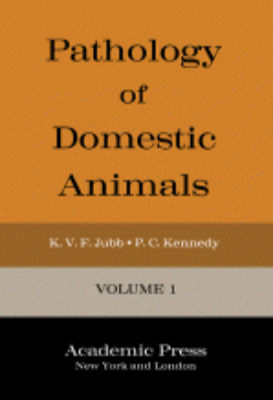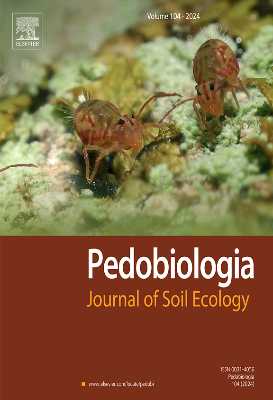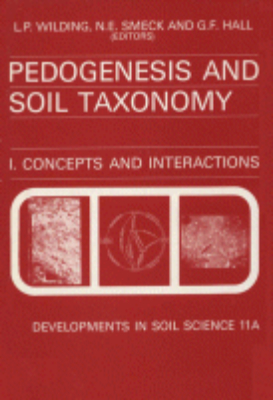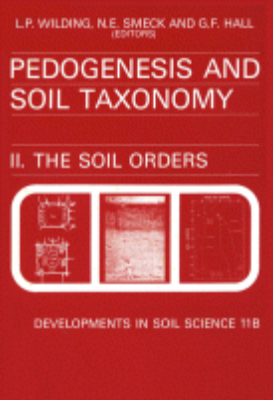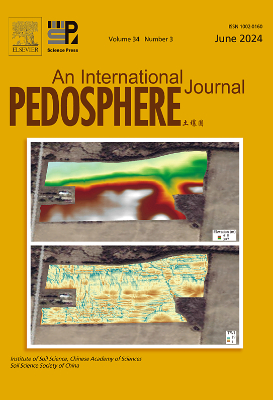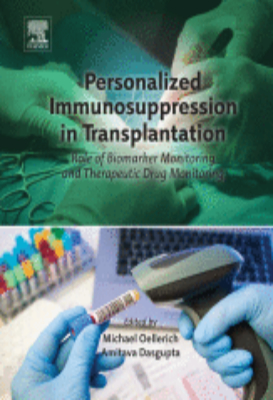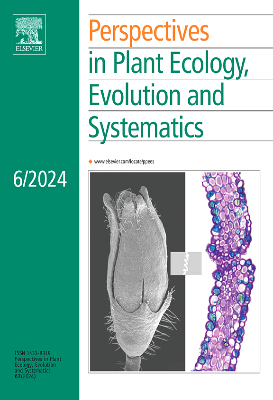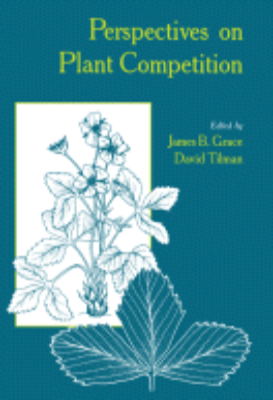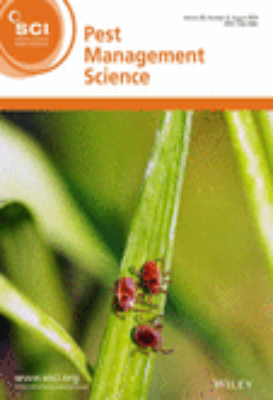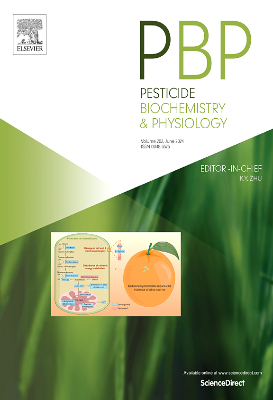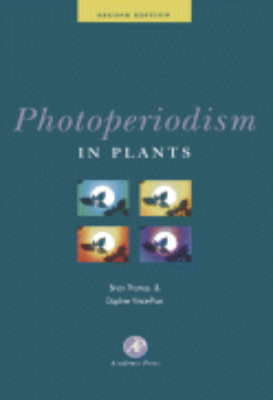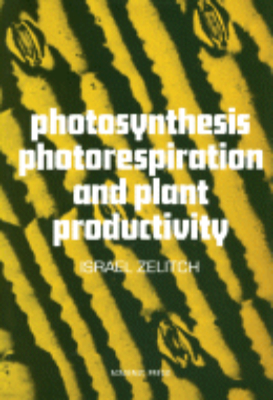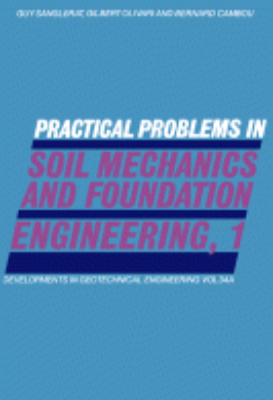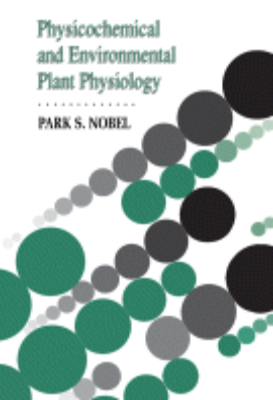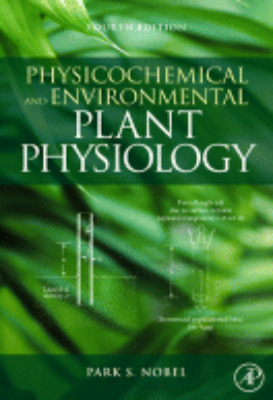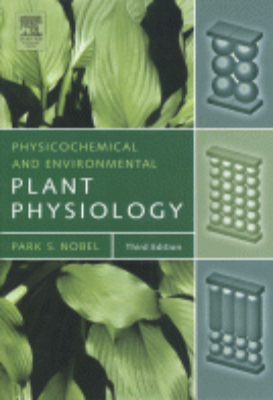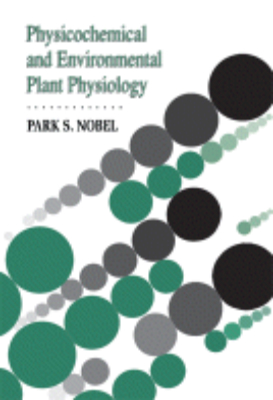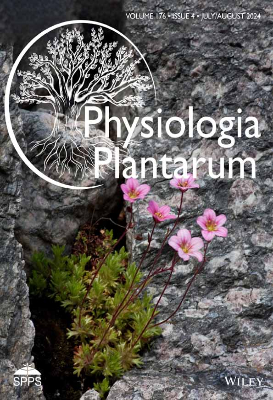Agricultural Science
Origin and Phylogeny of Rices
"rigin and Phylogeny of Rices provides an evolutionary understanding of the origin, spread, and extent of genetic diversity in rice. This single volume is the first to review and synthesize the significant work done in this area in the last 30 years.Rice is the most important food crop of humankind. It provides more energy and also forms the staple food for more humans than any other food plant. This book assesses multiple aspects of this crucial crop in chapters devoted to rice's history and spread, phylogeny of the genus Oryza, Oryza species and their interrelationships, and the origins of west African and Asian rice. Key Features. Offers an interpretive review of the latest research on this vital crop. Guides further research and understanding with an extensive list of references. Enhances the presentation of concepts via illustrations throughout"
ORYZA-An International Journal of Rice
Focus and Scope Association of Rice Research Workers (ARRW) intends to foster rice research for widening the horizons of rice science and to increase world rice production. It is open to all scientist engaged in rice research. ARRW publishes peer reviewed original research articles, short communications and review articles on all aspects of rice research, covering basic and applied work on crop improvement, crop management, crop protection and environmental security. Peer Review Process The review policy of articles as follows 1. Internal review by editorial committee of the association within a month of submission. 2. If agreed by internal reviewer, then sent for external reviewing to the subject matter specialist. Criteria of Judgment of Submission: The criteria for judgment of submitted article is as follows: 1. Rice and rice based research 2. Innovativeness of the work 3. Importance of the submitted research at present 4. Soundness of the methodology 5. Proper discussion with recent literature Time taken to conduct the review: Usually 2 to 8 weeks Publication Frequency Journal is published quarterly. Open Access Policy This journal provides immediate open access to its content on the principle that making research freely available to the public supports a greater global exchange of knowledge. Sponsors Indian Council of Agriculutral Research Journal History For quick dissemination of research information amongst the rice scientists of the country and abroad, to help increase rice production, the Association of Rice Research Workers (ARRW) was founded in 1961, under the President ship of Dr. R.H. Richharia, the then Director, Central Rice Research Institute, Cuttack. Copyright: Association of Rice Research Workers
Osmotic and Ionic Regulation in Animals
Osmotic and Ionic Regulation in Animals focuses on the processes involved in osmoregulation. The book first discusses general considerations of osmoregulation in animals, including the distinction of body fluids, definitions, and properties of solutions and membranes. The text also looks at the different types of excretory organs, including the differentiation of the excretory organs of mollusks, crustaceans, and vertebrates; protonephridia; and excretion in insects. The selection also describes the ionic regulation in marine animals. Topics include the selective advantages of ionic regulation; mechanisms of ionic regulation; and composition of tissues. The text also discusses osmotic regulation in brackish and freshwater animals. The book also focuses on osmotic regulation in terrestrial animals, including salt gain and loss, secretions, water loss and uptake, and osmotic pressure and composition of blood. The text is a good source of information for readers interested in osmoregulation.
Oxidative Damage to Plants
"With contributions that review research on this topic throughout the world, Oxidative Damage to Plants covers key areas of discovery, from the generation of reactive oxygen species (ROSs), their mechanisms, quenching of these ROSs through enzymatic and non-enzymatic antioxidants, and detailed aspects of such antioxidants as SOD and CAT. Environmental stress is responsible for the generation of oxidative stress, which causes oxidative damage to biomolecules and hence reduces crop yield. To cope up with these problems, scientists have to fully understand the generation of reactive oxygen species, its impact on plants and how plants will be able to withstand these stresses. Key Features. Provides invaluable information about the role of antioxidants in alleviating oxidative stress. Examines both the negative effects (senescence, impaired photosynthesis and necrosis) and positive effects (crucial role that superoxide plays against invading microbes) of ROS on plants. Features contributors from a variety of regions globally"
Oxygen in the Animal Organism
Oxygen in the Animal Organism is a compilation of papers presented during the symposium on Oxygen in the Animal Organism, jointly sponsored by the International Union of Biochemistry and the International Union of Physiological Sciences, held at Bedford College, London in September 1963. The book provides a multidisciplinary approach to the study of the subject of oxygen in the animal organism. The papers presented cover a wide range of facts and hypotheses on the subject. Topics discussed include studies in the transport of oxygen; the fundamental physics and chemistry of oxygen; the diffusion of oxygen from the capillaries to the mitochondria; the neural and humoral components to the regulation of ventilation; and the evolution of biochemical pathways for oxygen. Biologists, biochemists, biophysicists, physiologists, and researchers will find the text informative and insightful.
Pain Management in Animals
An ever-increasing number of drugs are available to veterinarians for use in the control of pain. This new, concise guide gives vets with all the information they need to choose the most appropriate pain medication for any clinical situation. Introductory chapters explain the physiology of pain and pharmacology of analgesics, and are followed by detailed chapters on management of acute and post-operative pain and chronic pain, the problems of pain management and pain assessment. Written by an international team of veterinary pain management experts,Pain Management in Animalsprovides vets with all the information they need to provide good pain control in all their patients.
Pathogens Vectors and Plant Diseases
Pathogens, Vectors, and Plant Diseases: Approaches to Control is a collection of papers that discusses how vector host interactions, vector ecology, and disease epidemiology can be applied to disease prevention and control. The book deals with innovative strategies pertaining to control of vector-borne viruses and viral infections in plants. One paper discusses nonpesticidal control of vector-borne viruses including soil solarization that uses solar energy for crop protection, and insect sterilization through radiation, chemosterilants or genetic modifications. Another paper discusses chemicals that interfere with nucleic acid and protein synthesis; as these interactions pose no hazards to animal (mammals), the chemicals are suitable for controlling viral diseases. One author examines the use of oil sprays and reflective surfaces as a means of controlling plant viruses transmitted by insects. In the United States, the entry of vector-borne plant pathogens is controlled by plant quarantine. One author lists several ways in effective quarantine procedures, as well as, the safe importation of potential vectors as cultures. This book is suitable for environmentalists, biologists, conservationists, agriculturists, botanists, and researchers in botany and plant genealogy.
Pathology of Domestic Animals: Volume 1 1963
Pathology of Domestic Animals, Volume 1 elaborates on the bone structure and diseases, as well as the genital, circulatory, and respiratory systems, of domestic animals. The manuscript first offers information on bones, joints, and synovial structures and diseases of joints, including adaptational deformities of the skeleton, metabolic diseases of bones, necrosis and inflammation of bones, and discontinuities of bone and the healing of fractures. The text then ponders on the circulatory and respiratory systems. Discussions focus on congenital anomalies of the heart and large vessels, myocardium, hypertrophy and dilation of the heart, pharynx and guttural pouches, larynx and trachea, lungs, and pleura and mediastinum. The publication examines the haemopoietic system and endocrine glands. Topics include blood and bone marrow, general reactions of erythrocytes to injury, lymphoreticular tissues, adrenal glands and paraganglia, and polycythaemia. The book then reviews the male and female genital systems. The manuscript is a valuable source of data for readers interested in the pathology of domestic animals.
Personalized Immunosuppression in Transplantation
"Personalized Immunosuppression in Transplantation: Role of Biomarker Monitoring and Therapeutic Drug Monitoring provides coverage of the various approaches to monitoring immunosuppressants in transplant patients, including the most recently developed biomarker monitoring methods, pharmacogenomics approaches, and traditional therapeutic drug monitoring. The book is written for pathologists, toxicologists, and transplant surgeons who are involved in the management of transplant patients, offering them in-depth coverage of the management of immunosuppressant therapy in transplant patients with the goal of maximum benefit from drug therapy and minimal risk of drug toxicity. This book also provides practical guidelines for managing immunosuppressant therapy, including the therapeutic ranges of various immunosuppressants, the pitfalls of methodologies used for determination of these immunosuppressants in whole blood or plasma, appropriate pharmacogenomics testing for organ transplant recipients, and when biomarker monitoring could be helpful. Key Features. Focuses on the personalized management of immunosuppression therapy in individual transplant patients. Presents information that applies to many areas, including gmass spectrometry, assay design, assay validation, clinical chemistry, and clinical pathology. Provides practical guidelines for the initial selection and subsequent modifications of immunosuppression therapy in individual transplant patients. Reviews the latest research in biomarker monitoring in personalizing immunosuppressant therapy, including potential new markers not currently used, but with great potential for future use. Explains how monitoring graft-derived, circulating, cell free DNA has shown promise in the early detection of transplant injury in liquid biopsy"
Perspectives on Plant Competition
Perspectives on Plant Competition is mainly about addressing the many different perspectives in plant competition and finding a common ground among them. Its aim is that through this common ground, new theories can be created. Encompassing 20 chapters, this book is divided into three parts. Part I, Perspectives on the Determinants of Competitive Success, consists of eight chapters. This section deals mainly on the question of determination of competitive success. Different writers put forward various definitions of competition and competitive success to shed light on the question at hand. In the second part of this book, an opposing set of views regarding the consequences of competitive interactions for the plant community structure is provided. This section emphasizes the idea that competition is not the sole force in natural communities. Each chapter in this part focuses on a certain aspect of competition as seen in different communities across and within habitats and systems. Part III, which comprises of four chapters, focuses on the competition within the context of interaction of plants with organisms on the other trophic levels. The chapters set forth the idea that competition depends on the impacts of herbivores, parasites, and symbionts. The concluding part of the book greatly emphasizes the need to integrate the mechanisms of competition into the framework of the entire food web.
Photoperiodism in Plants
"Photoperiodism is the response to the length of the day that enables living organisms to adapt to seasonal changes in their environment as well as latitudinal variation. As such, it is one of the most significant andcomplex aspects of the interaction between plants and their environment and is a major factor controlling their growth and development. As the new and powerful technologies of molecular genetics are brought to bear on photoperiodism, it becomes particularly important to place new work in the context of the considerable amount of physiological information which already exists on the subject. This innovative book will be of interest to a wide range of plant scientists, from those interested in fundamental plant physiology and molecular biology to agronomists and crop physiologists. Key Features. Provides a self-sufficient account of all the important subjects and key literature references for photoperiodism. Includes research of the last twenty years since the publication of the First Edition. Includes details of molecular genetic techniques brought to bear on photoperiodism"
Photosynthesis Photorespiration and Plant Productivity
Photosynthesis, Photorespiration, and Plant Productivity provides a basis for understanding the main factors concerned with regulating plant productivity in plant communities. The book describes photosynthesis and other processes that affect the productivity of plants from the standpoint of enzyme chemistry, chloroplasts, leaf cells, and single leaves. Comprised of nine chapters, the book covers the biochemical and photochemical aspects of photosynthesis; respiration associated with photosynthetic tissues; and photosynthesis and plant productivity in single leaves and in stands. It provides illustrated and diagrammatic discussion and presents the concepts in outlined form to help readers understand the concepts efficiently. Moreover, this book explores the rates of enzymatic reactions and the detailed structure and function of chloroplasts and other organelles and their variability. It explains the mechanism of photosynthetic electron transport and phosphorylation and the importance of diffusive resistances to carbon dioxide assimilation, especially the role of stomata. It also discusses the importance of dark respiration in diminishing productivity; the differences in net photosynthesis that occur between many species and varieties; and the influence of climate to photosynthetic reactions. The book is an excellent reference for teachers, as well as undergraduate and graduate students in biology, plant physiology, and agriculture. Research professionals working on the disciplines of plant production and food supply will also find this book invaluable.
Physicochemical and Environmental Plant Physiology: 1991
This text is the successor volume to Biophysical Plant Physiology and Ecology (W.H. Freeman, 1983). The content has been extensively updated based on the growing quantity and quality of plant research, including cell growth and water relations, membrane channels, mechanisms of active transport, and the bioenergetics of chloroplasts and mitochondria. One-third of the figures are new or modified, over 190 new references are incorporated, the appendixes on constants and conversion factors have doubled the number of entries, and the solutions to problems are given for the first time. Many other changes have emanated from the best laboratory for any book, the classroom. Key Features Covers water relations and ion transport for plant cells; diffusion, chemical potential gradients, solute movement in and out of plant cells Covers interconnection of various energy forms; light, chlorophyll and accessory photosynthesis pigments, ATP and NADPH Covers forms in which energy and matter enter and leave a plant; energy budget analysis, water vapor and carbon dioxide, water movement from soil to plant to atmosphere
Physicochemical and Environmental Plant Physiology: Fourth Edition 2009
"Physicochemical and Environmental Plant Physiology, Fourth Edition, is the updated version of an established and successful reference for plant scientists. The author has taken into consideration extensive reviews performed by colleagues and students who have touted this book as the ultimate reference for research and learning. The original structure and philosophy of the book continue in this new edition, providing a genuine synthesis of modern physicochemical and physiological thinking, while entirely updating the detailed content. This version contains more than 40% new coverage; five brand new equations and four new tables, with updates to 24 equations and six tables; and 30 new figures have been added with more than three-quarters of figures and legends improved. Key concepts in plant physiology are developed with the use of chemistry, physics, and mathematics fundamentals. The book is organized so that a student has easy access to locate any biophysical phenomenon in which he or she is interested. Key Features. More than 40% new coverage. Incorporates student-recommended changes from the previous edition Five brand new equations and four new tables, with updates to 24 equations and six tables30 new figures added with more than three-quarters of figures and legends improvedOrganized so that a student has easy access to locate any biophysical phenomenon in which he or she is interestedPer-chapter key equation tablesProblems with solutions presented in the back of the bookAppendices with conversion factors, constants/coefficients, abbreviations and symbols"
Physicochemical and Environmental Plant Physiology: Third Edition 2005
"The new edition of Physicochemical and Environmental Plant Physiology uses elementary chemistry, physics, and mathematics to explain and develop key concepts in plant physiology. In fundamental ways, all physiological processes that occur in cells, tissues, organs, and organisms obey such relations. Topics include diffusion, membranes, water relations, ion transport, photochemistry, bioenergetics of energy conversion, photosynthesis, environmental influences on plant temperature, and gas exchange for leaves and whole plants. This new edition maintains the unparalleled commitment to clear presentation and improves upon the user friendliness of the previous versions. Key Features. All illustrations have been redrawn, many in two-color. New material includes: 14 new figures, 100 new references, 20 new equations and considerable new and revised text. Extensive cross-referencing with a simpler system for chapter sections and subsections. Easy-to-use format including major equations being presented at the beginning of each chapter, and calculations presented outside of the chapter text"
Physicochemical and Plant Physiology
Physicochemical and Environmental Plant Physiology provides an understanding of various areas of plant physiology in particular and physiology in general. Elementary chemistry, physics, and mathematics are used to explain and develop concepts. The first three chapters of the book describe water relations and ion transport for plant cells. The next three chapters cover the properties of light and its absorption; the features of chlorophyll and the accessory pigments for photosynthesis that allow plants to convert radiant energy from the sun into chemical energy; and how much energy is actually carried by the compounds ATP and NADPH. The last three chapters consider the various forms in which energy and matter enter and leave a plant as it interacts with its environment. These include the physical quantities involved in energy budget analysis; the resistances affecting the movement of both water vapor and carbon dioxide in leaves; and the movement of water from the soil through the plant to the atmosphere.

